Simple Steps to Drill a Large Hole in Wood

Drilling a large hole in wood can seem like a daunting task, especially if you are new to woodworking or DIY projects. However, with the right tools and techniques, it can be much easier than you think. In this article, we will guide you through the simple steps to drill a large hole in wood.
Step 1: Choose the Right Drill Bit
Before you start drilling, it is important to select the right drill bit for the job. For drilling large holes in wood, you will need a spade bit or a hole saw. Spade bits are typically used for holes up to 1 ½ inches in diameter, while hole saws can create larger holes, up to 6 inches in diameter or even more.
Step 2: Mark the Center of the Hole
Once you have chosen your drill bit, you need to mark the center of the hole on the wood. This can be done by measuring and marking the desired location with a pencil or a marker. Use a ruler or a square to ensure that your mark is straight and accurate.
Step 3: Secure the Wood
Before you start drilling, it is important to secure the wood so that it doesn’t move or slip as you drill. You can use clamps or a vise to hold the wood in place. Make sure that the wood is firmly secured and won’t move during the drilling process.
Step 4: Start Drilling
Now that everything is set up, it’s time to start drilling. Place the tip of the drill bit on the center mark you made earlier and apply gentle pressure to the wood. Start drilling at a slow speed to create a small pilot hole. Once the pilot hole is created, you can increase the speed and continue drilling until you reach the desired depth.
Step 5: Clean Up the Hole
After drilling the large hole, you may notice some rough edges or burrs around the opening. Use sandpaper or a file to smooth out these rough areas and make the hole clean and even. This step is important, especially if you plan to use the hole for any kind of fitting or inserting.
Remember to always follow safety precautions when using power tools. Use safety goggles to protect your eyes from flying wood chips, and always keep your hands away from the drill bit while it is spinning. Take your time and work slowly to ensure accuracy and prevent accidents.
By following these simple steps, you can drill a large hole in wood with ease. Whether you are working on a woodworking project or a DIY home improvement task, drilling large holes will no longer be a challenge for you.
Gathering the Required Tools

Before you begin drilling a large hole in wood, it’s important to gather the necessary tools and equipment. Having the right tools will make the process easier and ensure clean, precise results. Here are the essential tools you’ll need:
1. Drill
A power drill is the primary tool you’ll need for drilling the hole. Make sure you have a drill with enough power and torque to handle the size of the hole you’re planning to drill. Consider using a corded drill for more power, or a cordless drill for portability.
2. Drill Bit
Choose a drill bit specifically designed for drilling large holes in wood. For holes larger than 1 inch in diameter, a Forstner bit is recommended. If you’re drilling a hole smaller than 1 inch, a spade bit or an auger bit can be used.
3. Safety Glasses
Always wear safety glasses to protect your eyes from flying debris and wood chips while drilling. Safety should be your top priority when working with power tools.
4. Clamps
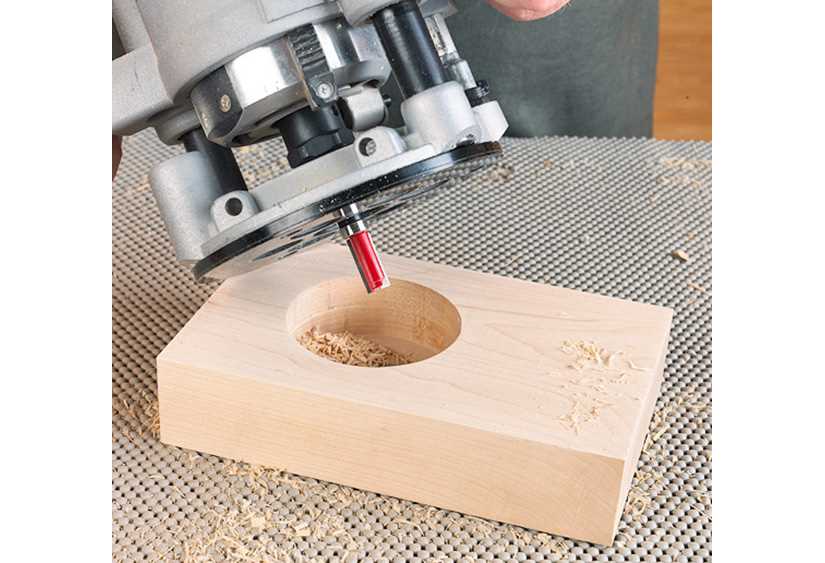
Using clamps to secure the wood in place will help prevent it from moving or shifting while drilling. This will ensure more accurate and precise drilling results.
5. Measuring Tape or Ruler

To ensure proper placement and alignment of the hole, use a measuring tape or ruler to measure and mark the desired location on the wood.
6. Pencil or Marker
Use a pencil or marker to mark the center point of the hole on the wood. This will serve as a guide for drilling.
7. Dust Collection System (optional)
If you have a dust collection system or a vacuum attachment for your drill, it will help to keep your work area clean by collecting the wood dust as you drill.
By gathering these essential tools, you’ll be well-prepared to drill a large hole in wood efficiently and effectively. Remember to always prioritize safety and take necessary precautions while working with power tools.
Preparing the Work Area
Before you start drilling a large hole in wood, it is important to prepare your work area to ensure safety and efficiency. Taking the time to set up the proper environment will make the drilling process easier and help prevent accidents.

Clean the Work Area
Remove any debris, clutter, or other objects that may be in your way. This will give you more space to work and reduce the risk of tripping or knocking things over.
Secure the Wood
Make sure the piece of wood you are drilling is properly secured. You can use clamps or a vise to hold the wood in place, preventing it from moving or shifting during drilling.
Use a Workbench
If possible, use a workbench or sturdy surface to drill your hole. This will provide a stable and comfortable working area, allowing you to exert more force when necessary.
Wear Safety Equipment
Always wear appropriate safety equipment such as safety goggles, gloves, and ear protection. This will protect you from any flying debris or loud noises that may occur during the drilling process.
Plan for Dust and Debris
Drilling wood can produce a significant amount of dust and debris. Place a dust collector or a tarp underneath the drilling area to catch the debris, making cleanup easier.
Create a Layout
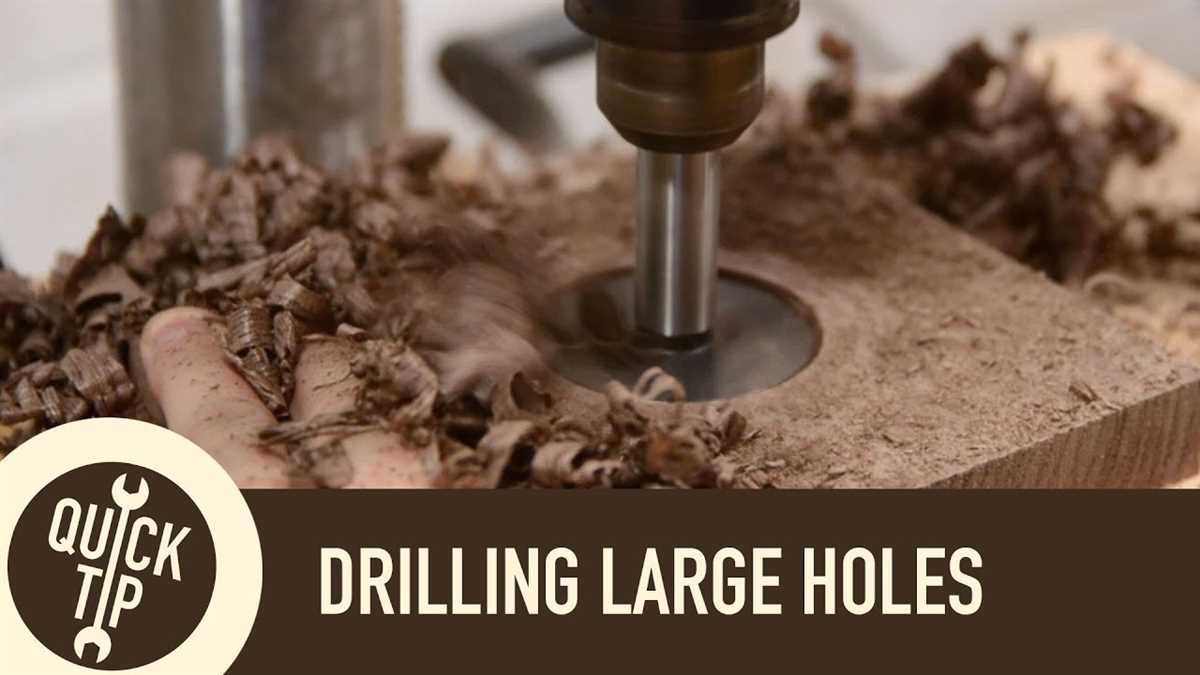
Measure and mark the location of the hole on the wood using a pencil or a marking tool. This will help guide your drilling and ensure accuracy.
Check Power Sources
Ensure that your power source is compatible with the drill and make sure it is in good working condition. Inspect the power cord for any signs of damage or fraying before plugging it in.
Organize Tools and Supplies
Gather all the tools and supplies you will need for the drilling process. This may include drill bits, a tape measure, a level, and any other necessary tools. Having everything organized and easily accessible will save you time and frustration.
By following these steps to prepare your work area, you will be well-equipped and ready to start drilling a large hole in wood.
Marking the Hole
Before drilling a large hole in wood, it is important to properly mark the location where the hole will be drilled. This ensures accuracy and reduces the risk of making mistakes.
Here are some simple steps for marking the hole:
- Measure and mark the center of the hole using a ruler or measuring tape. This will determine the exact spot where the hole will be drilled.
- Use a pencil to make a small dot or crosshair at the center point. This will serve as a reference mark during the drilling process.
- If the wood surface is uneven or has rough edges, use a straight edge or a square to create a clean and straight line around the center mark. This will help guide the drill bit during drilling.
- Consider using a pilot hole to guide the drill bit. A pilot hole is a smaller hole drilled into the wood to provide a starting point for the larger hole. This can be especially useful when drilling large holes.
Tip: It is always a good idea to double-check the marking before starting drilling to ensure accuracy. This can be done by re-measuring the distance and aligning it with the reference mark.
Choosing the Right Drill Bit

Introduction
When drilling a large hole in wood, it is important to choose the right drill bit. The choice of drill bit depends on the size of the hole you need and the type of wood you are working with. This guide will help you select the appropriate drill bit for your woodworking project.
Types of Drill Bits
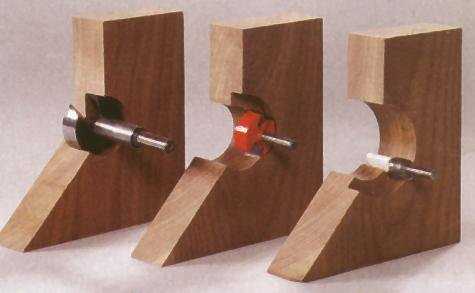
There are several types of drill bits that are commonly used for drilling large holes in wood. These include:
- Twist Drill Bits: These are the most common type of drill bits and are suitable for drilling holes up to a certain size.
- Forstner Bits: These bits are designed for drilling clean, flat-bottomed holes and are ideal for larger diameter holes.
- Spade Bits: Also known as paddle bits, these are commonly used for drilling large holes in wood.
- Hole Saw Bits: These bits are used for cutting large diameter holes in wood and other materials.
Factors to Consider
When choosing a drill bit for drilling a large hole in wood, there are several factors you need to consider:
- Hole Size: Consider the size of the hole you need to drill and choose a drill bit that is suitable for that diameter.
- Wood Type: Different types of wood require different types of drill bits. For example, hardwoods may require a different drill bit compared to softwoods.
- Accuracy: If you require precise and clean holes, consider using a Forstner bit or a hole saw bit.
- Speed and Power: Some drill bits require higher speed and power settings to drill through wood efficiently. Make sure your drill has the appropriate speed and power for the selected drill bit.
Conclusion
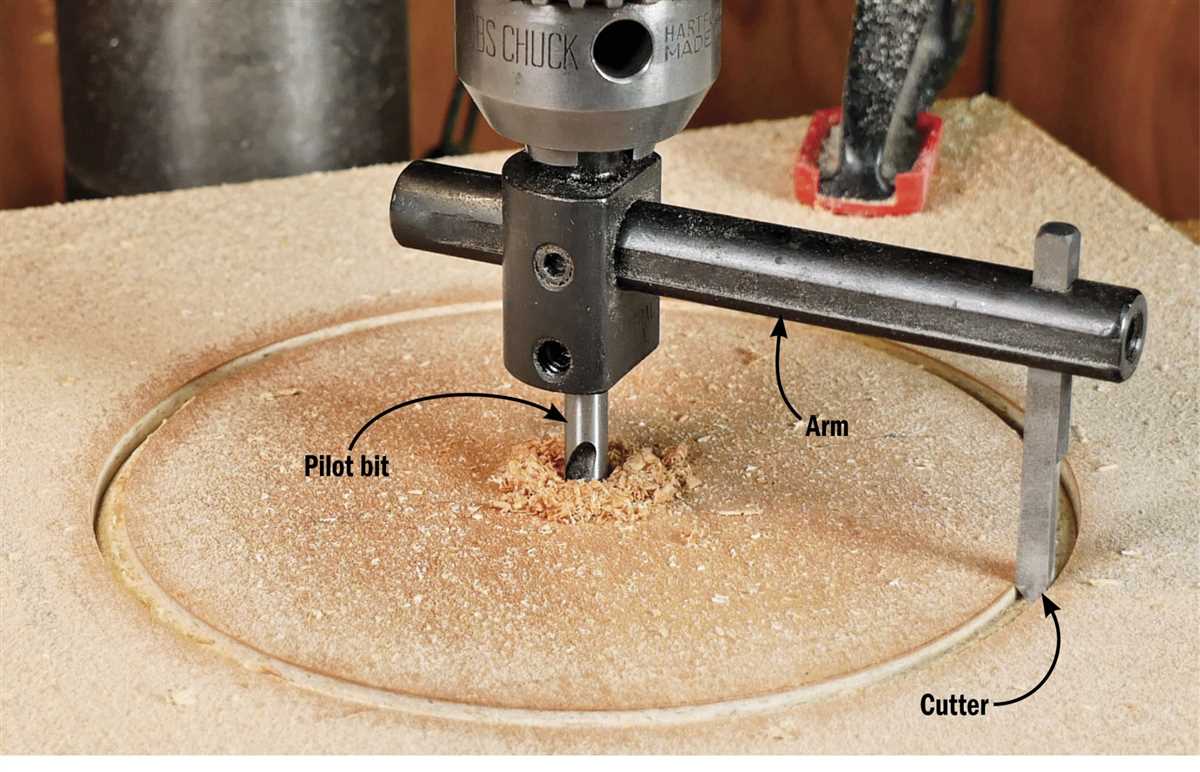
Choosing the right drill bit is crucial when drilling a large hole in wood. Consider the factors mentioned above, such as the hole size, wood type, accuracy requirements, and drill speed and power, to select the appropriate drill bit for your woodworking project. With the right drill bit, you can achieve clean and precise holes in your woodwork.
Securing the Wood
Before drilling a large hole in wood, it’s important to properly secure the wood to prevent any movement or damage during the drilling process. There are a few simple steps you can follow to ensure the wood is securely held in place:
1. Clamp the Wood
One of the easiest ways to secure the wood is by using clamps. Position the wood on a flat surface and use clamps to hold it down tightly. Make sure the clamps are securely fastened, so the wood doesn’t shift or move while drilling.
2. Use a Workbench
If you have a workbench, place the wood on the workbench and use the clamps or bench vise to hold it in place. The solid and stable surface of the workbench will provide a sturdy foundation for drilling.
3. Mount the Wood to a Wall
If you’re drilling a large hole in a vertically-oriented piece of wood, consider mounting it to a wall. Use screws or nails to attach the wood to the wall, ensuring it is securely held in place. This method can be especially useful when drilling large holes in heavy or long pieces of wood.
4. Create a Stable Base
If you don’t have access to clamps, a workbench, or a wall, try creating a stable base for the wood. Place the wood on a non-slip surface, such as rubber matting or non-skid pads, to prevent it from moving or sliding during drilling.
5. Use Support Blocks
If your wood is uneven or doesn’t sit flat on the surface, use support blocks to level it out. Place the blocks underneath the wood, ensuring they are stable and even. This will provide a solid foundation and prevent the wood from wobbling or shifting during drilling.
By following these steps to secure the wood, you can ensure a safe and successful drilling process. Remember to always wear appropriate safety gear, such as safety goggles and gloves, and take necessary precautions to avoid any accidents or injuries.
Drilling the Hole
To drill a large hole in wood, follow these simple steps:
- Prepare the wood: Mark the location on the wood where the hole needs to be drilled. Ensure that the wood is securely clamped in place to prevent any movement during the drilling process.
- Select the right drill bit: Choose a drill bit that is suitable for drilling large holes in wood. For larger holes, a spade bit or a hole saw would be the best option. Make sure the drill bit is sharp and in good condition.
- Set up the drill: Install the selected drill bit onto the drill by following the manufacturer’s instructions. Adjust the drill speed and torque settings to a suitable level for drilling the wood.
- Begin drilling: Position the drill bit on the marked location and start drilling. Apply moderate pressure and keep the drill as straight as possible to ensure a clean and accurate hole.
- Clear away debris: As you drill, periodically stop to clear away the wood chips and sawdust that accumulate around the hole. This will help prevent overheating and ensure smooth drilling.
- Check the depth: Measure the depth of the hole as you go to ensure it reaches the desired depth. This can be done by marking the drill bit with tape or using a depth gauge.
- Finish and clean: Once the desired depth is achieved, slowly remove the drill from the hole. Use a brush or compressed air to clean out any remaining debris from the hole and the surrounding area.
- Inspect the hole: Examine the drilled hole to ensure it is smooth, clean, and meets the required specifications. If necessary, use sandpaper or a chisel to refine the edges of the hole.
Following these steps will help you successfully drill a large hole in wood while maintaining accuracy and cleanliness.
Cleaning Up and Finishing
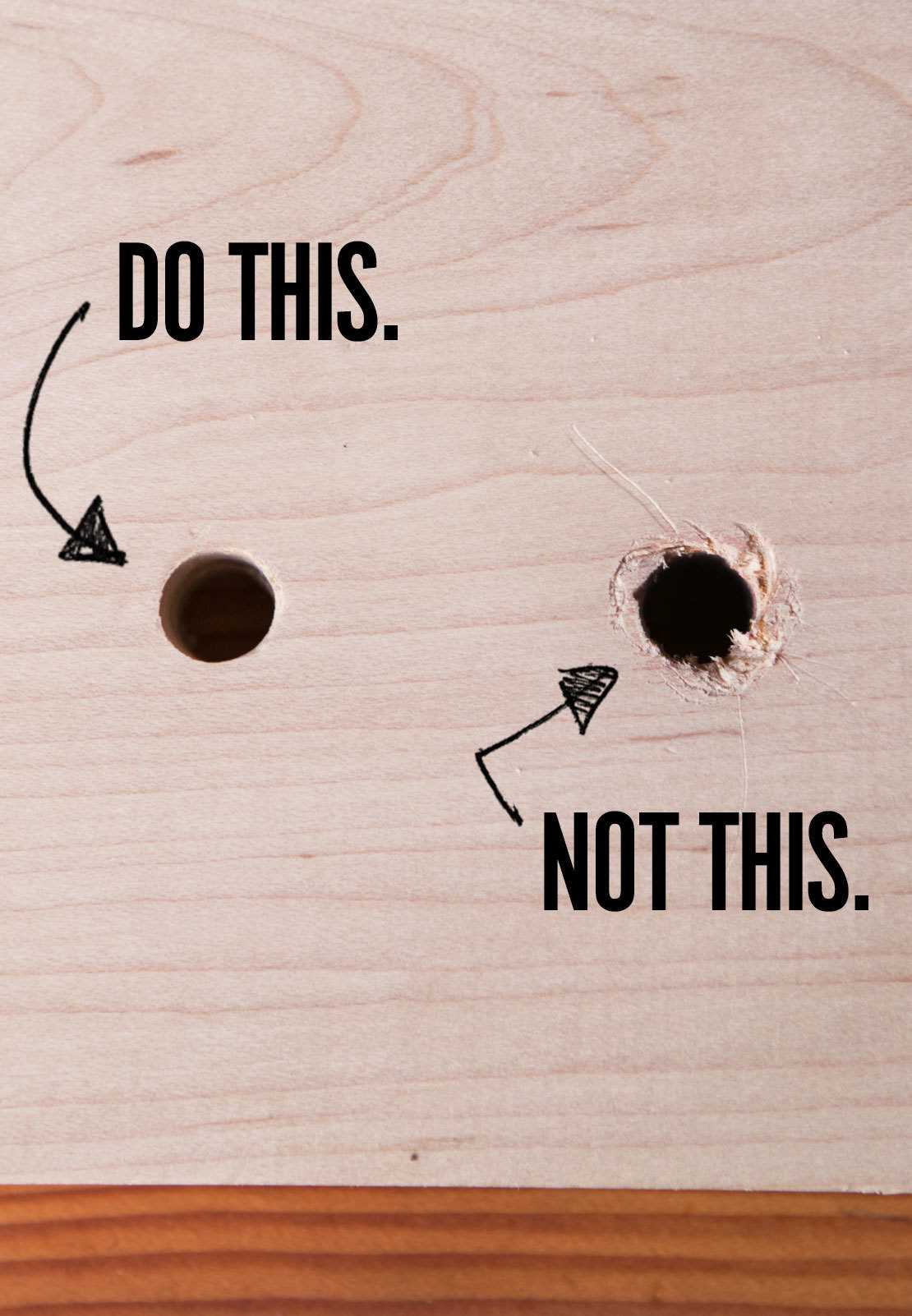
After drilling a large hole in wood, it’s important to clean up any debris and finish the hole properly. This will ensure that the hole is smooth, free of splinters, and ready for use. Here are some simple steps to follow:
Step 1: Remove Debris
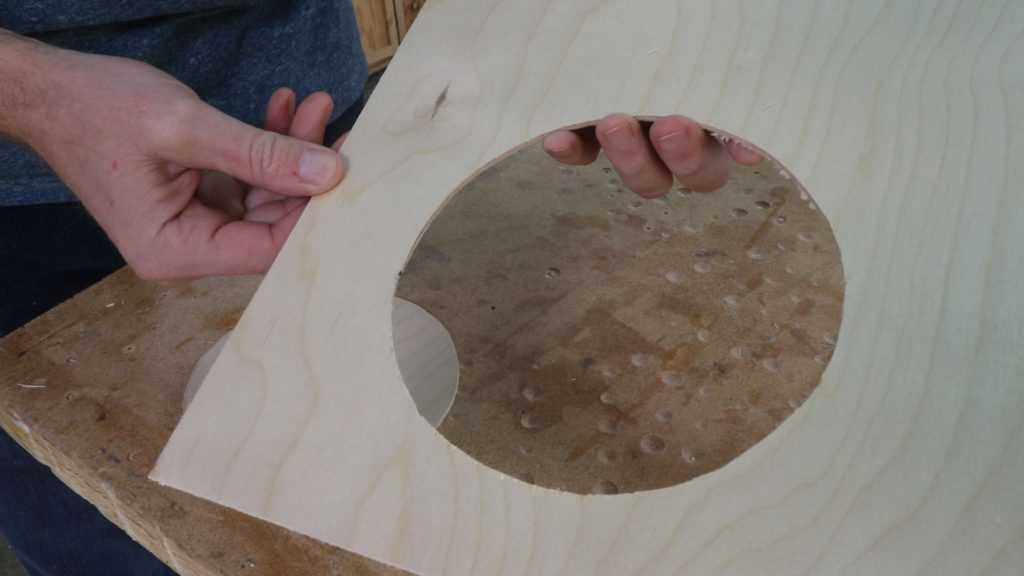
- Use a brush or vacuum to remove any wood chips or dust from the hole. This will help create a clean surface for finishing.
- Be sure to remove any larger pieces of wood that may be stuck in the hole to prevent them from interfering with your project.
Step 2: Sand the Edges
- Use sandpaper or a sanding block to smooth out the edges of the hole. This will prevent any splinters or rough spots that could cause injury or damage to your project.
- Sand the edges in a circular motion, applying even pressure to ensure a smooth and consistent finish.
Step 3: Fill and Finish
- If the hole has any gaps or imperfections, use wood filler to fill them in. Apply the filler with a putty knife, and then sand it down once it’s dry to achieve a seamless finish.
- If you want to give the wood a polished look, you can apply a wood stain or varnish to the surrounding area. This will enhance the natural beauty of the wood and provide extra protection.
Step 4: Inspect and Test
- Once you have cleaned up and finished the hole, inspect it carefully to ensure that it meets your requirements. Look for any remaining debris, rough edges, or imperfections.
- If desired, you can test the hole by inserting the intended object or fastener to ensure a proper fit and function.
By following these simple steps, you can clean up and finish a large hole in wood effectively. This will ensure that your project is safe, functional, and aesthetically pleasing.
FAQ:
What tools are needed to drill a large hole in wood?
To drill a large hole in wood, you will need a drill machine, a large drill bit, a center punch, and a hammer.
What size drill bit should I use for drilling a large hole in wood?
The size of the drill bit you should use depends on the diameter of the hole you want to drill. You can find drill bits in various sizes, so choose one that matches the size of the hole you need.
Can I use a regular drill for drilling a large hole in wood?
Yes, you can use a regular drill for drilling a large hole in wood. However, it’s recommended to use a drill with a lower speed setting and a larger drill bit specifically designed for drilling large holes to achieve the best results.
How can I ensure that the drill bit stays in the right place while drilling a large hole?
To ensure that the drill bit stays in the right place, you can use a center punch and a hammer to create a small indentation in the wood. This will provide a starting point for the drill bit and prevent it from slipping while drilling.
What should I do if the drill bit gets stuck while drilling a large hole in wood?
If the drill bit gets stuck while drilling a large hole in wood, you should stop drilling and try to remove the bit carefully. If it’s stuck too tight, you may need to apply some lubricant or use a wrench to help loosen the bit before removing it.
Video:










